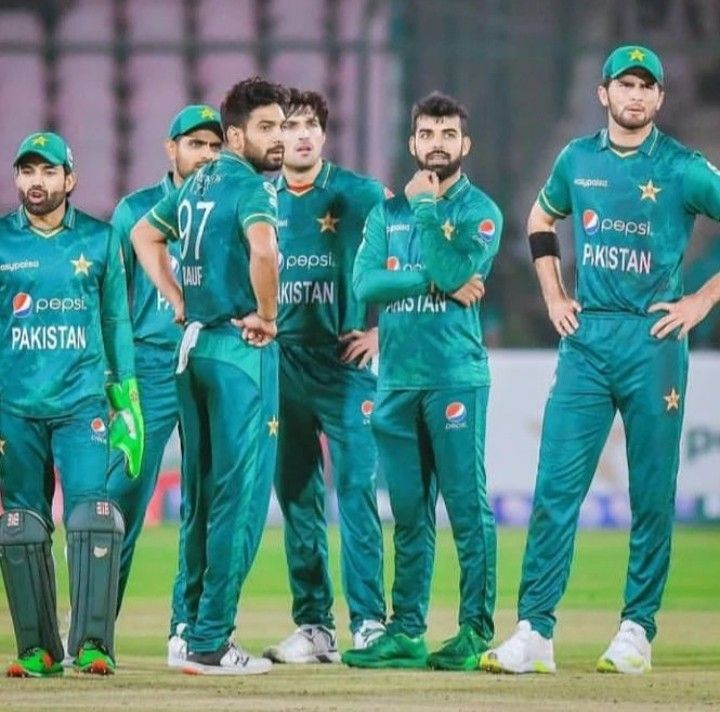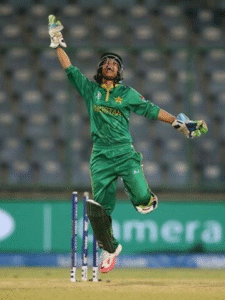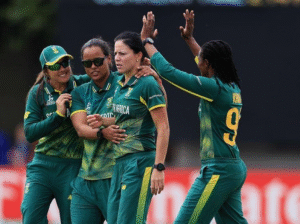
Once nearly forgotten, cricket is booming across Canada — from Toronto to Yellowknife — as immigrants from South Asia, Africa, and the Caribbean transform the nation’s sporting culture.
Cricket’s Unlikely Rise in the Land of Ice and Hockey
In a country synonymous with ice hockey, baseball, basketball, and American football, few would expect the sound of leather on willow to echo across Canadian parks and parking lots. Yet, that’s exactly what’s happening.
Cricket — long considered a niche sport in Canada — is now experiencing an extraordinary revival. From Toronto’s suburbs to Vancouver’s green spaces, and even the icy fields of Yellowknife, the game is thriving in ways that were unimaginable a decade ago.
What was once a nearly forgotten pastime has become one of the fastest-growing sports in the country, thanks to a passionate new generation of players — many of them immigrants from South Asia, the Caribbean, and Africa.
From Parking Lots to Playgrounds: A Grassroots Explosion
On a typical summer evening in Winnipeg, you might spot a group of young players bowling and batting in an unlikely setting — the parking lot of a Walmart.
“We get a lot of complaints,” admits Paramjit Shahi, president of the Manitoba Cricket Association. “They’re just neighbourhood kids who love the game. The parking lots are well-lit, and that’s where they can play after work.”
Across Canada, scenes like this are increasingly common. The demand for cricket facilities has far outpaced supply, forcing players to improvise — on asphalt, tennis courts, and school grounds.
In Regina, Saskatchewan, the city government even had to post signs on tennis courts that read, “Cricket is not allowed on courts.” Batters were damaging the surfaces, city officials explained. But the ban didn’t stop the enthusiasm. The city has since built three dedicated cricket pitches, recognizing that the sport is here to stay.
The Numbers Tell the Story
The statistics are staggering. In Manitoba — a province with fewer than 1.5 million residents — the number of cricket teams has soared from fewer than 20 eight years ago to 72 today, according to Shahi.
“We don’t have enough grounds,” he said during an inter-provincial tournament held just south of Winnipeg. The match was played on a windswept patch of prairie, but the enthusiasm was undeniable. Local politicians joined cricket officials to inaugurate three new-roofed shelters, evidence of growing public investment in the sport.
The Urban Cricket Boom
In major cities like Vancouver and Toronto, cricket has become a weekend ritual. Fields are packed, leagues are expanding, and social media groups dedicated to scheduling local matches are buzzing with activity.
“The sport is thriving. Not too many people are aware,” said Imdad Alli, a veteran Guyana-born cricketer who moved to Toronto in 1979. “It’s a beautiful thing — the diversity, the passion, the community. Cricket has become part of our identity here.”
Yet, for all its popularity, cricket still lacks adequate infrastructure. There aren’t enough dedicated grounds, indoor training facilities, or year-round academies to accommodate the thousands of new players entering the game each year.
Canada’s Forgotten National Sport
Few Canadians realize that cricket was once the country’s official national sport. In 1867, John A. Macdonald, Canada’s first Prime Minister, declared cricket as the nation’s official pastime.
The sport had deep colonial roots. In fact, the world’s first-ever international cricket match was played in 1844 between Canada and the United States in New York City — more than two decades before Canada became a country. The then-British colony of Canada won the match.
“Wherever the British went, they took cricket with them,” explains Nishant Jeet Arora, an organizer of the Canada Super 60 Cricket League in British Columbia. “Cricket was part of our foundation. What’s happening now is more of a comeback than a discovery.”
A Century of Silence and a 21st Century Revival
By the early 20th century, as Canada’s cultural and economic ties shifted away from Britain, interest in cricket waned. The rise of ice hockey, baseball, and North American-style sports pushed cricket to the margins.
But in the 21st century, things began to change. The arrival of millions of immigrants from cricket-loving nations — particularly India, Pakistan, Bangladesh, Sri Lanka, the Caribbean, and Africa — reignited the passion for the sport.
Televised coverage of the Indian Premier League (IPL) and other international tournaments brought the game into Canadian living rooms. Suddenly, children growing up in Mississauga, Surrey, and Calgary were idolizing players like Virat Kohli, Babar Azam, and Chris Gayle.
“Cricket has come back to its home in Canada,” said Arora. “It has roots here — and now it has a future again.”
Canada’s International Cricket Legacy
While domestic cricket has taken time to catch up, Canada’s presence on the international stage is not new. The country has qualified for four ICC Cricket World Cups, including the 2003 edition in South Africa, where John Davison made headlines with his blistering 111 against the West Indies, then the fastest hundred in World Cup history.
In recent years, Canada’s national team has shown renewed promise, fueled by young talent and a growing domestic base. Players such as Jatinder “Sunny” Matharu have represented Canada in tournaments across Antigua, Oman, Namibia, and Zimbabwe, gaining valuable exposure and experience.
However, the path to sustained success remains steep — largely because of the country’s harsh climate and limited cricketing infrastructure.
Battling the Elements: Cricket in a Cold Country
Unlike traditional cricket nations blessed with year-round sunshine, Canada faces a unique challenge — snow and sub-freezing temperatures for nearly half the year.
“It’s pretty hard,” admitted Matharu, who plays for the national team and lives in Winnipeg. “We have six or seven months of winter. You need the whole year to train, but that’s just not possible outdoors here.”
To cope, players have turned to indoor facilities, community gyms, and even fieldhouses — like the one in Yellowknife, Northwest Territories, where enthusiasts play during the long Arctic winters.
When summer arrives, cricketers make the most of it, often playing two or three matches a week to make up for lost time.
Women and Youth Lead the Next Wave
Cricket’s growth in Canada isn’t limited to men. The women’s game is also expanding rapidly.
In Brandon, Manitoba, a city of fewer than 60,000 people, a local all-girls team competes regularly in intercity tournaments. Similarly, St. John’s, Newfoundland, with a population of just over 110,000, now boasts a growing women’s cricket club.
“The participation of women and young girls is one of the most exciting developments,” said Shahi. “It shows that cricket is not just surviving here — it’s evolving.”
Youth cricket, too, has flourished. Many schools and community organizations now offer introductory programs, while provinces like Ontario and British Columbia have launched structured leagues for under-15 and under-19 players.
Corporate and Cultural Recognition
The growing enthusiasm has caught the attention of mainstream sports organizations. Earlier this year, Major League Baseball’s Toronto Blue Jays hosted a special event called “Cricket Day at the Park.”
“New to cricket? This is a perfect chance to learn more about the sport while still enjoying the game you know and love,” read the Blue Jays’ promotion. The event was a hit, symbolizing the sport’s growing integration into Canada’s multicultural sporting identity.
Local governments, too, are beginning to invest. New pitches, floodlights, and training facilities are being developed across major cities. Toronto’s cricket infrastructure, for example, has expanded significantly to accommodate the swelling player base.
Community, Culture, and Connection
For Canada’s immigrant communities, cricket is more than just a sport — it’s a cultural bridge.
“It connects us to our roots,” said Alli, now a veteran in Toronto’s over-50 international team. “When I came here in 1979, cricket was something only a few of us played. Today, you see kids from every background picking up bats and balls. It’s beautiful.”
Fellow player Garvin Budhoo, who represents Canada’s over-60 team, shares that sentiment. “All of a sudden, we have all these teams,” he said. “Now the kids want to play. It feels like the game has finally found a home again.”
Cricket has become a way for communities to stay connected — a weekend ritual that brings people together, transcending language, race, and background.
The Future of Cricket in Canada
While challenges remain — particularly around infrastructure, funding, and year-round training — the momentum behind Canadian cricket is undeniable.
The Canadian Premier League (CPL) and tournaments like the Global T20 Canada have further boosted interest, attracting international players and local sponsors alike.
If current growth trends continue, experts believe Canada could soon re-establish itself as a regular contender in international tournaments and potentially host major cricket events in the future.
For many, this is not a distant dream but an achievable reality. “Cricket has the potential to become one of Canada’s top sports,” said Arora. “It’s inclusive, it’s global, and it has deep roots here. We just need to nurture it.”
Conclusion: Cricket Returns Home
Cricket’s resurgence in Canada is more than just a sporting story — it’s a story of migration, diversity, and belonging.
From parking lots in Winnipeg to community grounds in Toronto and indoor arenas in Yellowknife, the game has become a symbol of how new Canadians are reshaping the nation’s identity while reconnecting it with its forgotten past.
As players young and old continue to bowl, bat, and dream under Canada’s bright summer skies, one truth stands out: cricket may have been forgotten for a while, but now — it’s truly come home.
Internal Linking Suggestions:
- Link “Canada cricket history” to a feature on the first international cricket match in 1844.
- Link “Manitoba Cricket Association” to an article on regional sports development.
- Link “Global T20 Canada” to your event coverage or franchise cricket blog.
- Link “Women’s cricket in Canada” to a story about female sports participation trends.



